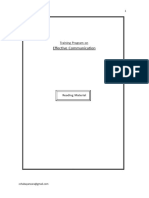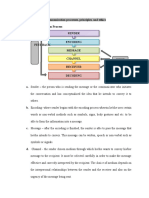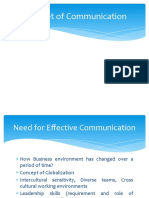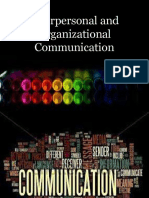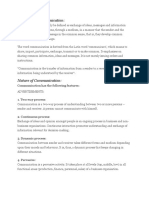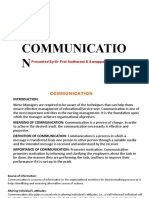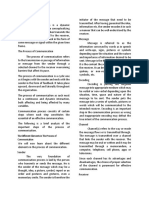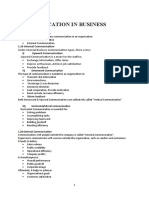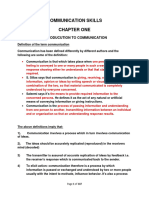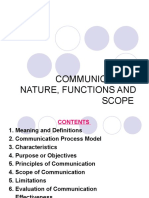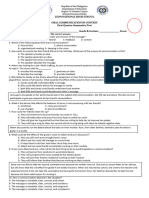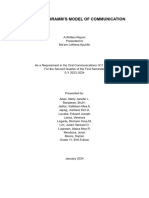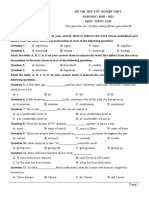0% found this document useful (0 votes)
29 views3 pages4 Functions of Communication in Workplace
The document outlines the four main functions of communication in the workplace: motivation, information sharing, emotional expression, and control. It also describes various communication models, including linear, interactive, and transactional models, emphasizing the importance of feedback and context. Additionally, it highlights principles of successful communication, such as clarity, appropriate medium, and minimizing barriers, while stressing that communication is an ongoing process.
Uploaded by
robertmaqdadaroCopyright
© © All Rights Reserved
We take content rights seriously. If you suspect this is your content, claim it here.
Available Formats
Download as DOCX, PDF, TXT or read online on Scribd
0% found this document useful (0 votes)
29 views3 pages4 Functions of Communication in Workplace
The document outlines the four main functions of communication in the workplace: motivation, information sharing, emotional expression, and control. It also describes various communication models, including linear, interactive, and transactional models, emphasizing the importance of feedback and context. Additionally, it highlights principles of successful communication, such as clarity, appropriate medium, and minimizing barriers, while stressing that communication is an ongoing process.
Uploaded by
robertmaqdadaroCopyright
© © All Rights Reserved
We take content rights seriously. If you suspect this is your content, claim it here.
Available Formats
Download as DOCX, PDF, TXT or read online on Scribd
/ 3



